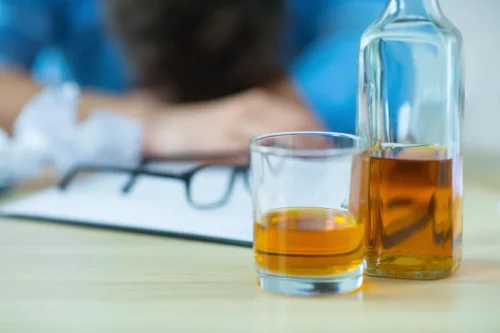Drug And Alcohol Rehab Programs: What You Need To Know
A residential program provides an individual with full-time residence at the facility and 24-hour supervision. However, this type of facility doesn’t meet the clinical criteria for hospitalization. Individuals in a residential program may undergo a substance detox and therapies—such as cognitive behavioral therapy—to address their substance use. Residential programs also include halfway or quarter-way houses to help individuals transition back into a new routine outside the facility after their time in the program is complete.
- People work with their therapists to identify triggers and high-risk situations that could lead to relapse.
- Finding the right facility for you involves the inclusion of a physician, therapist, or other healthcare provider to help you choose a facility to address all of your needs, including addiction and co-occurring disorders.
- Treatment services may include cognitive behavioral therapy (CBT), counseling, and relapse prevention.
- The facility combines evidence-based substance abuse and trauma treatment, comfortable amenities with mountain views, access to nutrition counseling, and various outdoor activities.
- Substance abuse treatment can save families and individuals money in the long run, and many times Medicare or supplemental insurance can be used to help pay for the costs.
- What former clients have to say, via personal recommendations and testimonials, can speak volumes about the facility, its staff, the treatment, and the overall experience.
- Others encourage participants to work through the entire program before seeing visitors.
Residential Program
Completing rehab is a major accomplishment, and it’s important to appreciate each day in recovery as the successful experience it is. That being said, living an alcohol- and drug-free life takes commitment beyond just giving up substances. It might be necessary to change friends and habits since returning to old lifestyles might trigger a relapse. Midwest Institute for Addiction provides addiction recovery treatment for drug addiction, including nicotine.
Addiction Recovery Statistics: Does Drug Rehab Work?

American Addiction Centers (AAC) owns and operates facilities at various locations nationwide to provide you or your loved one addiction and mental health care. There is no cure for drug addiction and no rehab program has a 100 percent success rate. Successful treatment also requires participants to be willing to live onsite for inpatient how long is drug rehab treatment or attend daily sessions for outpatient treatment. They accept only 10 people at a time, so everyone receives personalized care and privacy. The facility combines evidence-based substance abuse and trauma treatment, comfortable amenities with mountain views, access to nutrition counseling, and various outdoor activities.

Comprehensive Directory of Drug Rehab Centers
Chapters offers a variety of treatment options, including 12-step and non-12-step programs, luxury programs, inpatient therapy, holistic treatment, and dual diagnosis programs. This type of program is generally less intensive than inpatient rehab but can still provide comprehensive support through various levels of care. Inpatient https://ecosoberhouse.com/ involves several structured components to ensure a holistic approach to recovery. This article will explain the definition and purpose of a drug rehab center, factors to consider when choosing a rehab program, and provide an overview of the different treatment types available to you. Since withdrawal management alone is not a substitute for more comprehensive rehabilitation, once a person has safely detoxed, they are encouraged to continue with additional treatment. Upon completion of treatment, an aftercare plan will be devised that includes relapse prevention tools and other means of post-treatment support.
A better approach, however, involves judging the actual quality of care a facility provides—during and after the formal treatment period. This facility provides a co-ed, pet-friendly environment with individualized care. Treatment includes group therapy, individualized care, and a structured setting. Chapters Capistrano provides treatment for those with a variety of substance addictions, including heroin, cocaine, antidepressants, alcohol, and more.
- This can be especially helpful for those who have a dual diagnosis, such as addiction that occurs alongside other mental health disorders such as depression or anxiety.
- Use SAMHSA’s Directory of Single State Agencies for Substance Abuse Services or other rehab directories to find the local resource to contact in your state and find affordable rehab options.
- Some programs limit visitation during the early stages of detox and withdrawal.
- Depression and anxiety disorders may be common in seniors who also abuse alcohol or drugs.
- Upon completion of treatment, an aftercare plan will be devised that includes relapse prevention tools and other means of post-treatment support.
- This article will explore various types of rehab, levels of addiction treatment, what to expect from treatment, and how to find the right addiction treatment program.


- The timeframe can range from 28 days to several months, depending on their specific needs and the severity of their addiction.
- During this process, medical professionals can monitor vital signs and provide medications to ease discomfort and prevent complications.
- An overdose happens when the person uses enough of a drug to produce uncomfortable feelings, life-threatening symptoms, or death.
- You may also be able to attend a free rehab center that is either completely covered by your insurance or publicly funded.
- People in one or more of these categories will be the most likely to receive state-funded treatment services in the state of Washington.


